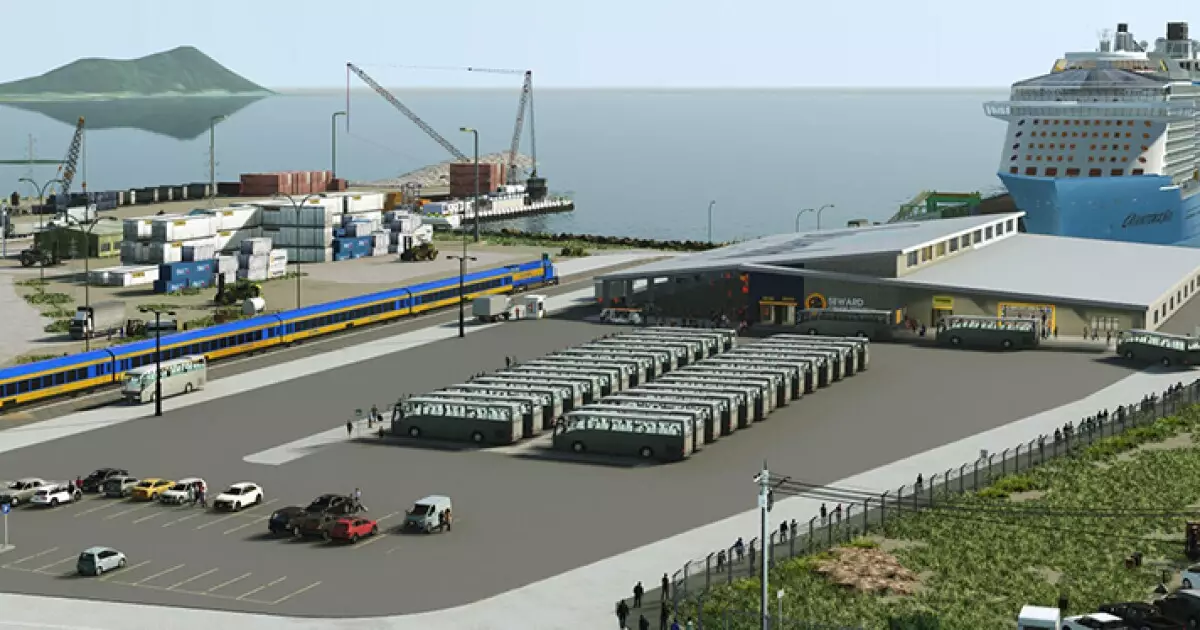Recent developments in Seward, Alaska, signal a momentous shift in the way state government can catalyze economic opportunity. With Alaska Governor Mike Dunleavy’s approval of House Bill 65, the Alaska Railroad Corporation is now empowered to issue up to $135 million in revenue bonds specifically for constructing a much-needed cruise ship dock and terminal facility. This initiative isn’t just a routine upgrade; it’s a critical investment that has the potential to reshape local economic landscapes. What’s compelling here is that it promises to do so without directly impacting state finances—a notable feat in today’s fiscal climate.
A Unique Economic Model
At the heart of this project lies a 30-year revenue-sharing agreement with Royal Caribbean Group, which guarantees a steady influx of a minimum of 140,000 guests each year. This deal highlights an innovative model of public-private partnership where both private enterprise and public infrastructure benefit. By implementing a port improvement fee on cruise guests, the financial burden of bond repayment is cleverly sidestepped, as it shifts from direct taxpayer funding to revenue generated from tourism. This model stands in stark contrast to many government-funded projects that often leave taxpayers exposed to potential shortfalls.
Broader Implications for Seward
Is this simply a tourism-driven initiative? Not according to city manager Kat Sorenson. The new terminal facility is intended as a multi-use community hub designed to fortify local culture and events. Having a state-of-the-art venue for functions like the Seward Music and Arts Festival will legitimately contribute to community cohesion. In a landscape where small towns often struggle to maintain vitality, this serves as a reminder that economic development can also nurture community spirit. It’s a delicate blend of tourism and local engagement that, if executed properly, could create enduring benefits for residents.
Infrastructure with Vision
The new floating barge dock represents more than just a replacement for the aging mid-1960s terminal; it’s a significant advance that accommodates modern cruise ship classes. Alaska Railroad CEO Bill O’Leary detailed that the 748-foot long, 100-foot wide dock will be equipped to receive even the largest cruise ships. This forward-thinking infrastructure development could elevate Seward to a prime destination for cruise lines looking for dockage across Alaska’s stunning coastlines.
Seward is poised to solidify its role as a key player in Alaska’s cruise industry, ensuring that southern coastal cities remain relevant in an increasingly competitive tourism market. Moreover, the inclusion of Alaska Marine Highway System ferries introduces a new dimension of intermodal transport, encouraging not just cruise tourism but also enhancing local intra-state travel, thereby fostering internal economic activity.
The Right Steps Forward
Despite the buzz surrounding these new developments, it is crucial to proceed with prudence. Although the projected economic benefits are promising, policymakers must ensure that the potential revenue streams materialize as anticipated. The allure of immediate gains can sometimes cloud long-term strategic planning. We must remain vigilant about ensuring that the investment translates into sustainable growth rather than a transient uptick in tourism traffic.
This development is emblematic of a broader shift toward responsible and innovative governance in Alaska. By prioritizing economic growth through community engagement without overextending fiscal commitments, Alaska is setting a benchmark for other states to follow. Whether we’re looking at the cruise industry as a robust economic driver or as a vehicle for fostering local culture, this initiative has the potential to revitalize Seward in ways that are both economically sound and socially enriching.

